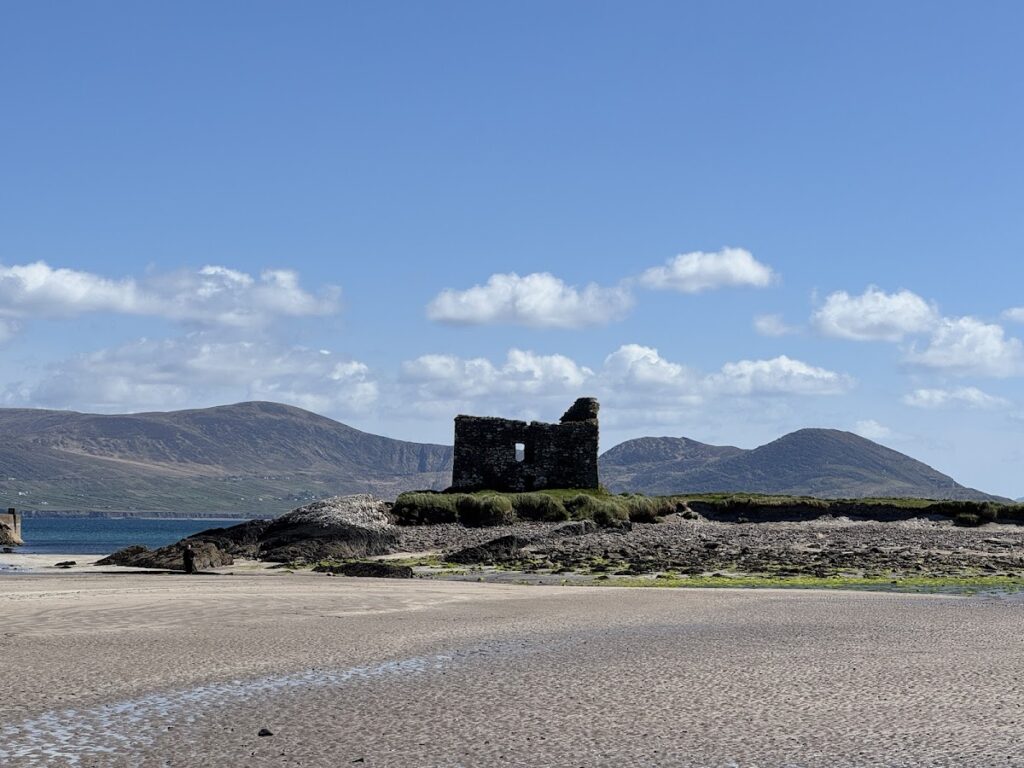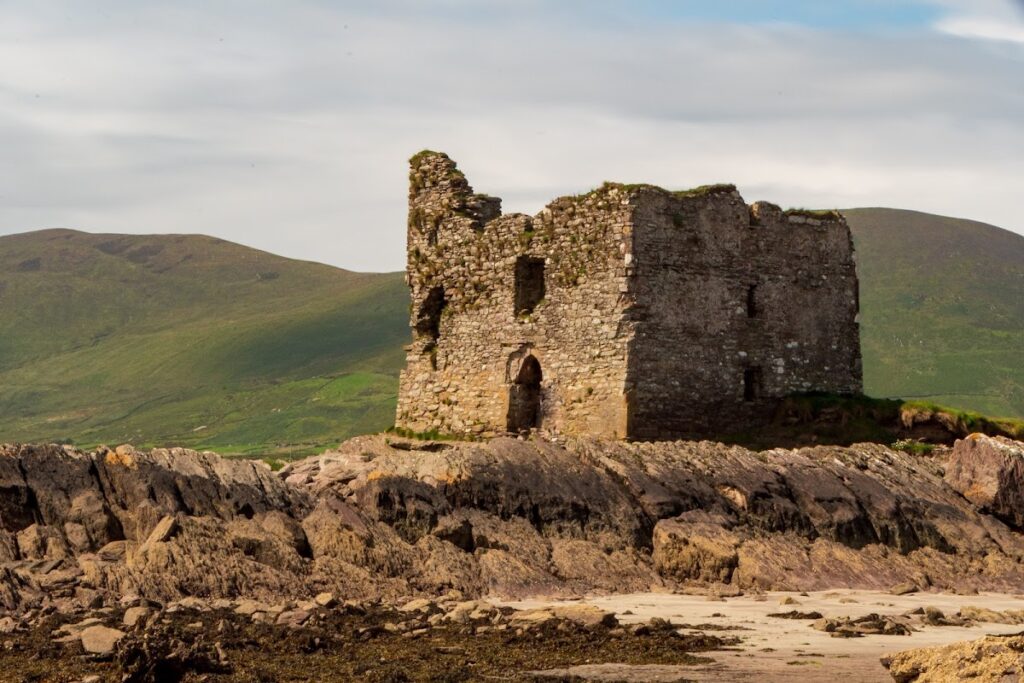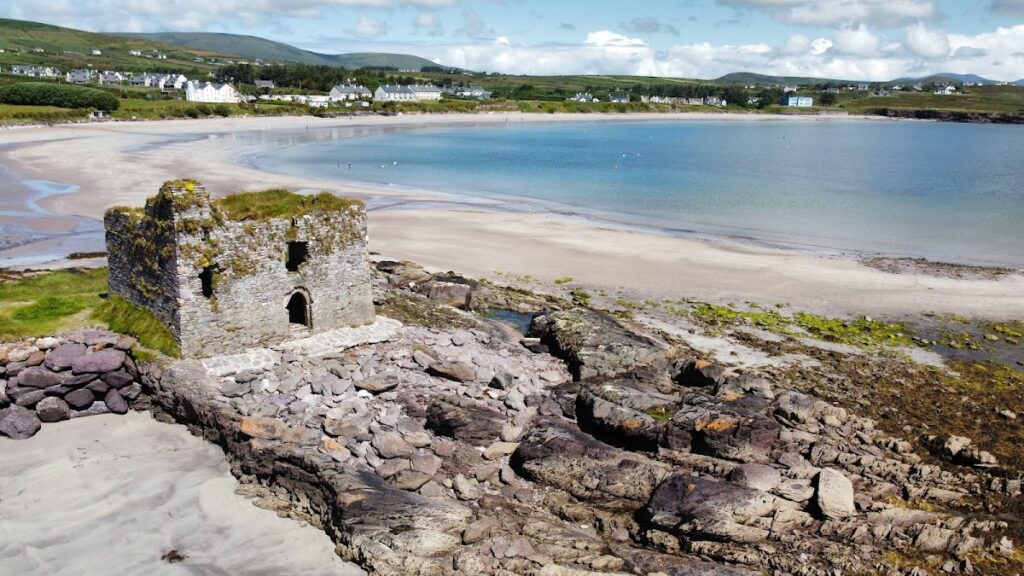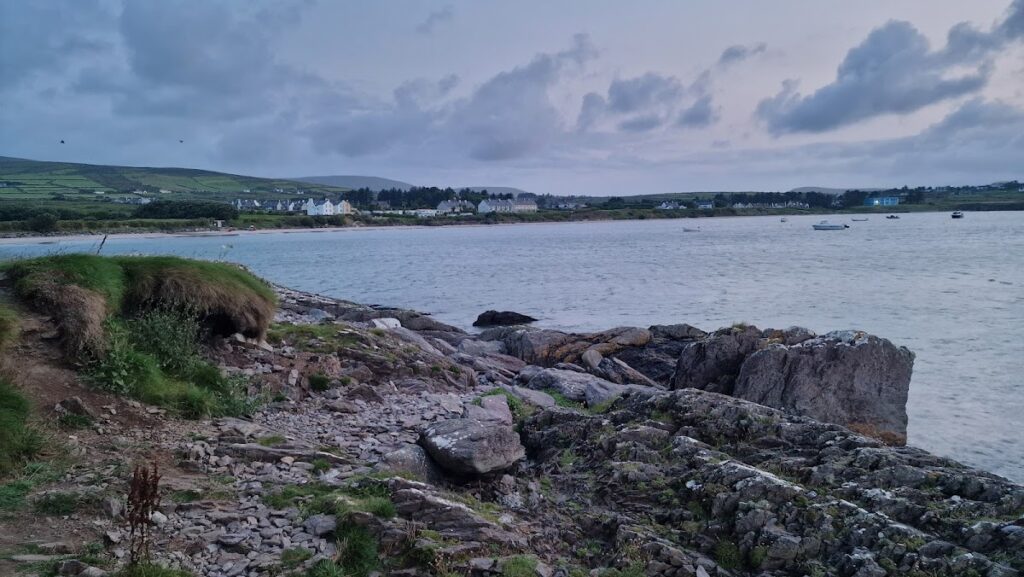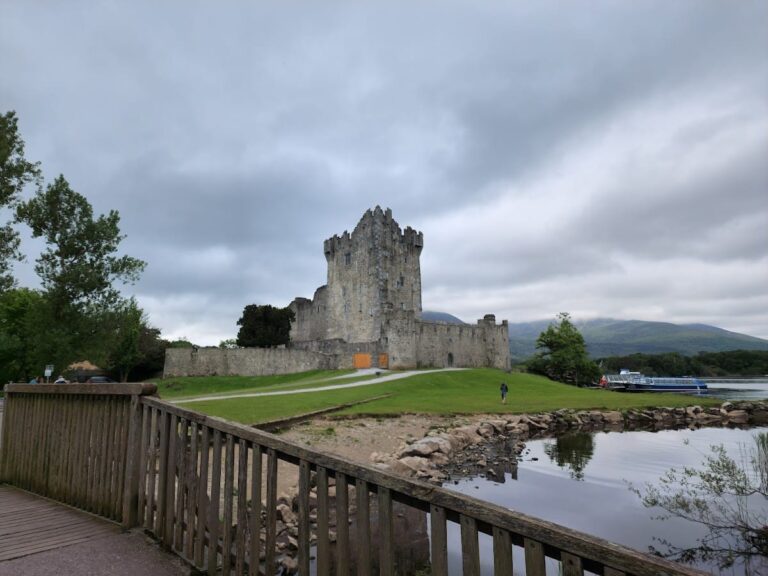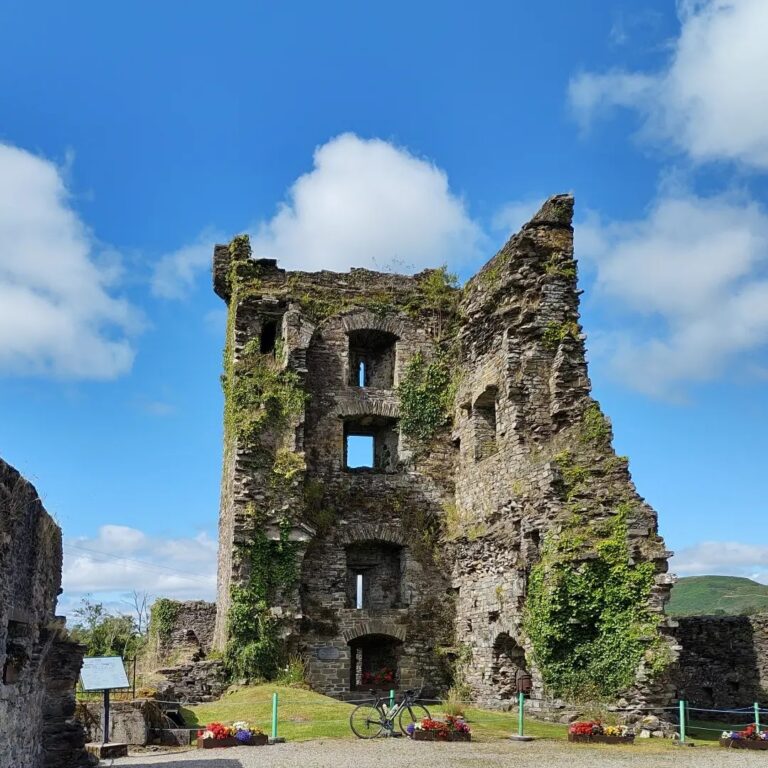Ballinskelligs Castle: A 16th-Century Coastal Stronghold in County Kerry, Ireland
Visitor Information
Google Rating: 4.5
Popularity: Low
Google Maps: View on Google Maps
Country: Ireland
Civilization: Unclassified
Remains: Military
History
Ballinskelligs Castle is located in the village of Ballinskelligs, County Kerry, Ireland. It was built during the 16th century by the MacCarthy Mór clan, a Gaelic Irish family, as a means of protecting the nearby bay from pirate raids and possibly to collect dues from ships arriving along the coast.
In the early 17th century, the castle appears to have come under the ownership of the Sigerson family. Christopher Sigerson, a member of this clan, is recorded as residing there around 1620, having acquired the adjacent Ballinskelligs Abbey. This suggests a transition in the castle’s role, possibly serving as a manorial residence as well as a defensive stronghold during this period.
The castle’s decline likely occurred around 1651 when it may have been destroyed during the military campaigns of the Cromwellian conquest of Ireland. During this time, forces of the New Model Army reclaimed Catholic-held territories, and Ballinskelligs Castle is believed to have been attacked in a manner akin to the nearby Fermoyle Castle, leading to its ruin.
Excavations undertaken in the late 20th century have shown no evidence of earlier buildings beneath the castle, confirming its origins in the post-medieval period. Artifacts recovered from these digs date exclusively to this era, reinforcing the castle’s established 16th-century foundation and use.
Remains
Ballinskelligs Castle survives today as a ruined tower house with a roughly rectangular plan measuring about 10 meters by 7.85 meters. Originally, the structure rose to three stories, with walls approximately 2 meters thick at ground level, built to withstand attacks and harsh coastal weather. The walls are primarily composed of local bedrock and large rounded stones gathered along the coast, while cut sandstone blocks form the corners, demonstrating careful masonry work where structural strength and finish were most critical.
The castle’s entrance is situated on the southeast side, notable for an adjoining chamber set within the thickness of the wall to the right of the doorway. This internal feature may have served a defensive or management function related to controlling entry. Along the seaward face, a series of beam holes found between the ground and first floors likely supported a wooden platform or stairway, which would have provided a vantage point for monitoring or defending the bay.
Surrounding the tower house, archaeological work uncovered remains of an enclosure whose foundations rest solidly on bedrock without the use of deep trenches, suggesting a simpler construction approach for the surrounding fortifications. The site is positioned on a narrow rocky promontory at the southern edge of Ballinskelligs Bay, where coastal erosion has drastically reduced the landmass, leaving the castle perched close to the water’s edge as it likely was centuries ago.
These ruins embody the defensive needs and construction methods of post-medieval coastal strongholds in southwest Ireland, preserving the tangible remains of Ballinskelligs Castle’s strategic role within its maritime landscape.

